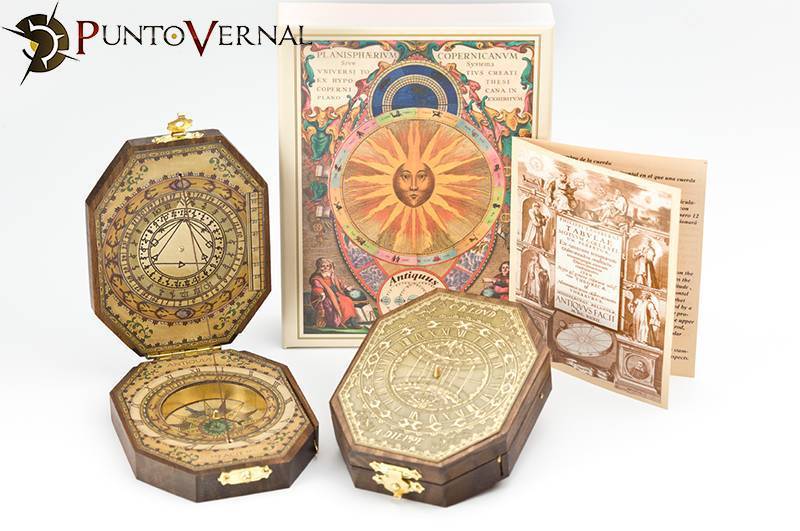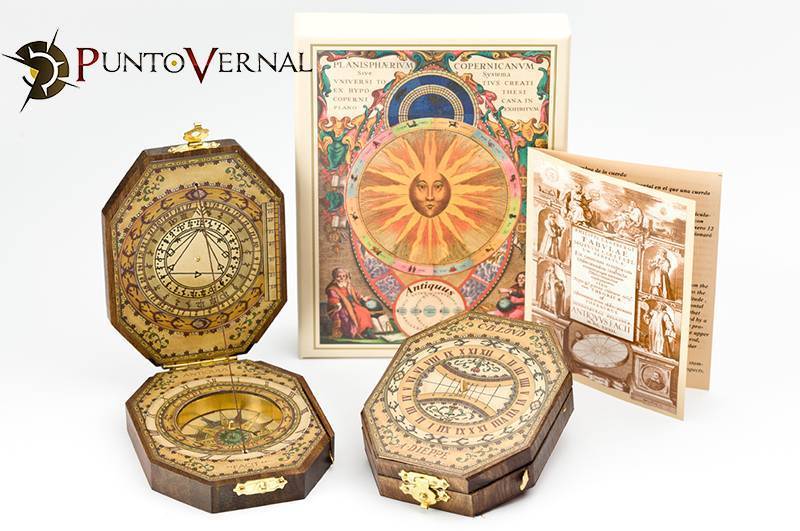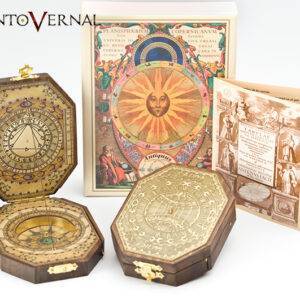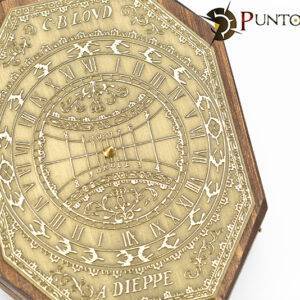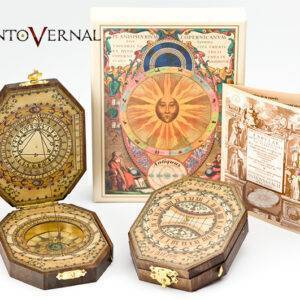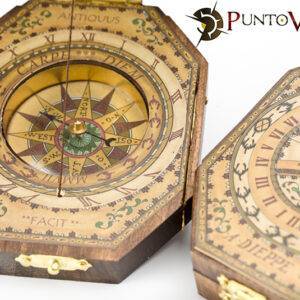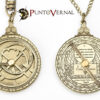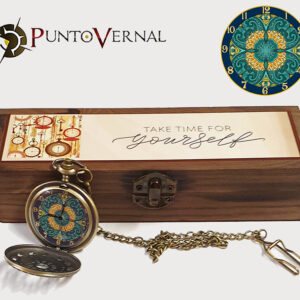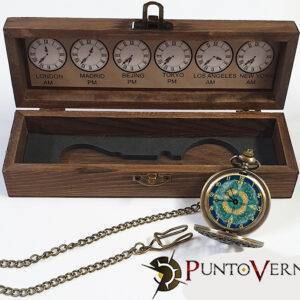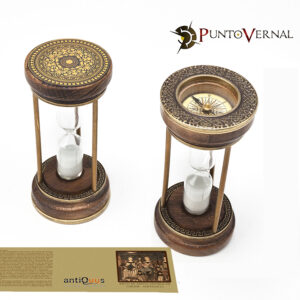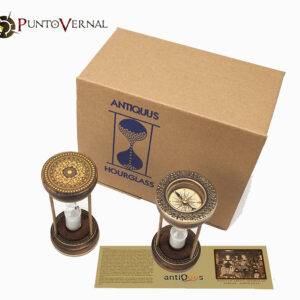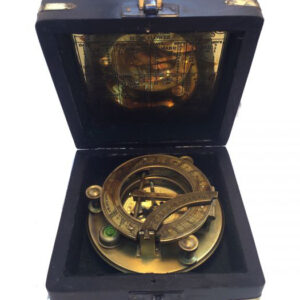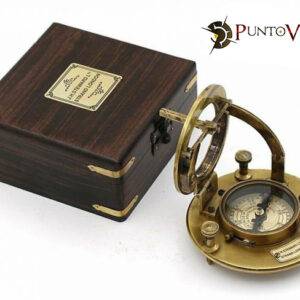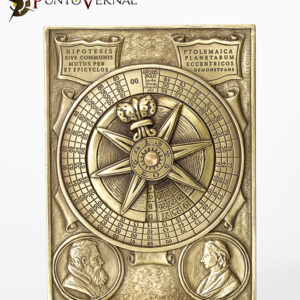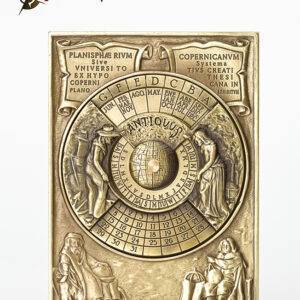OCTOGONAL SUNDIAL
This octogonal sundial is one of those known as pocket sundials. Its popularity reached its peak during the 15th and 16th centuries. Numerous artisan workshops began to produce this type of sundial, which, due to its fame and price, was accessible to the majority of the public. Also, its simple handling, far removed from instruments as sophisticated as the astrolabe, meant that even the less educated classes could use them.
COMPONENTS
It is made up of two boards, generally made of wood, joined by a hinge, in such a way that when opened, one of them remains vertical and at a 90º angle with respect to the other.
It consisted of a compass and two quadrants that correspond to two boards and that formed a horizontal and a vertical sundial respectively.
The compass was used to position the clock on the north-south meridian and once it was oriented, the shadow of the rope that joins the two boards, provided a shadow on both quadrants that corresponds to the solar time at that moment.
OUR SUNDIAL
This octagonal model is signed by Charles Bloud de Dieppe, one of the most renowned gnomonists of the time in France.
Inside there is a horizontal clock and on the vertical cover we find a curious lunar clock, since the shadow projected by the moon on full moon days could also, through simple calculations, provide the time during the night.
On its cover we have an equinoctial clock.
It is handmade from fir wood and polished with natural waxes and is presented in a beautiful case and is accompanied by a manual with its history and instructions for use.
We have two versions depending on their cover:
-Brass plate engraved with a beautiful equinoctial sundial
-Printed on paper with the same motif.
Measurements:
Width: 7 cm
Length: 9 cm
thickness: 2 cm
VAT INCLUDED
https://en.wikipedia.org/wiki/Sundial

